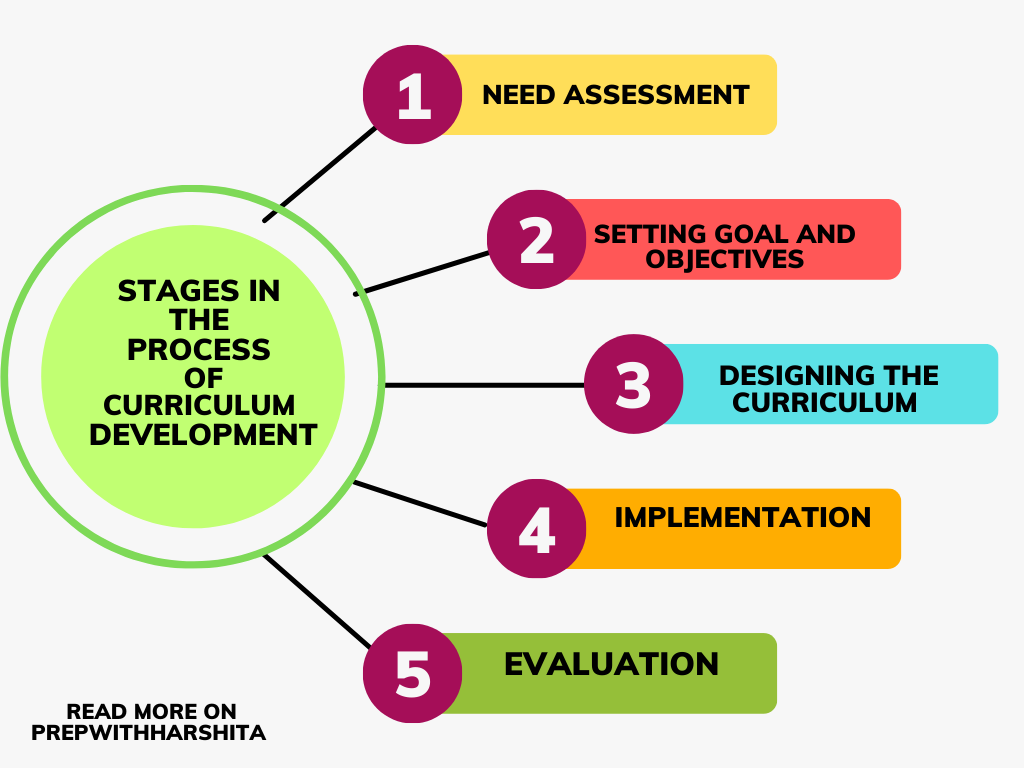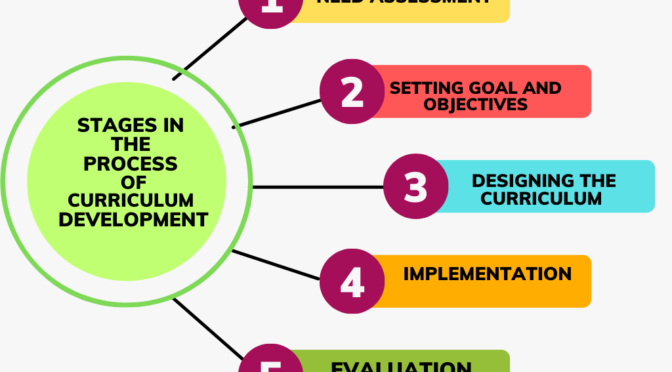The process of curriculum development typically involves several stages. The exact stages may vary depending on the specific context and needs of the educational institution or organization.
Following are some common stages in the process of Curriculum Development :
- Needs Assessment: The first stage of curriculum development involves identifying the current and future needs of the learners and the community. This stage requires gathering information from various sources such as students, teachers, parents, and other stakeholders to understand their needs, goals, and objectives. Needs assessment may involve conducting surveys, focus groups, interviews, or observations to collect data about the learners and the context in which the curriculum will be implemented.
- Setting Goals and Objectives: Based on the information gathered from the needs assessment stage, the goals and objectives of the curriculum are set. These should be specific, measurable, achievable, relevant, and time-bound (SMART). Setting goals and objectives helps to ensure that the curriculum is designed to meet the needs and goals of the learners and the community.
- Designing the Curriculum: Once the goals and objectives have been set, the curriculum is designed. This stage involves developing a framework for the curriculum, including the content, instructional strategies, assessment methods, and materials. The content should be aligned with the goals and objectives of the curriculum and should be organized in a logical and meaningful way. Instructional strategies should be selected based on the learning needs of the learners and the goals of the curriculum. Assessment methods should be aligned with the learning objectives and should provide meaningful feedback to learners.
- Implementation: In this stage, the curriculum is implemented in the classroom. Teachers and other educators use the curriculum to guide their instruction, and students engage with the content and activities. Implementation of the curriculum should be done in a systematic and consistent manner to ensure that the curriculum is delivered as intended.
- Evaluation: Once the curriculum has been implemented, it is evaluated to determine its effectiveness. Evaluation methods may include tests, surveys, observations, or other forms of assessment. The purpose of evaluation is to identify the strengths and weaknesses of the curriculum and make necessary adjustments.
- Revision: Based on the evaluation, the curriculum is revised and updated to improve its effectiveness. Revision may involve making changes to the content, instructional strategies, assessment methods, or materials. The revised curriculum should be aligned with the goals and objectives of the curriculum and should be designed to meet the needs of the learners and the community.
- Implementation of revised curriculum: Once the revisions have been made, the revised curriculum is implemented in the classroom. The evaluation and revision cycle continues as the curriculum is continuously monitored and updated to ensure that it remains effective.
It’s important to note that the process of curriculum development is an iterative process, and the stages may not always follow a linear sequence. Additionally, there may be additional stages or steps depending on the context and specific needs of the educational institution or organization.
Also Read : Curriculum Change

Also Visit : Prep with Harshita

